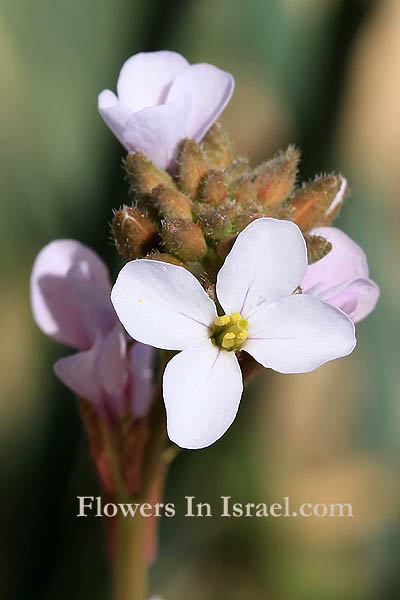Hebrew: כפיות שעירות, Arabic: ام قرين
| Scientific name: | Carrichtera annua (L.) DC. | |
| Common name: | Ward’s Weed | |
| Hebrew name: | כפיות שעירות | |
| Arabic name: | ام قرين | |
| Plant Family: | Cruciferae / Brassicaceae, מצליבים |

Location: Dudaim Forest, Goral Hills |
| Life form: | Annual | |
| Stems: | Erect, 5–40 cm high, reflexed bristly hairs, branching basally, decumbent | |
| Leaves: | Alternate, rosette, dissected twice or more, dentate or serrate | |
| Flowers: | Raceme 10–30 mm long; sepals c. 4 mm long; petals 8–9 mm long, white, cream-yellow, purple-veined | |
| Fruits / pods: | Silique 6–7 mm long, pendent on pedicel 2–3 mm long; beak 3–4 mm long, c. 3 mm wide, spoon-like; valves c. 3 mm long, 3–4 mm wide, 3-veined; seeds 3 or 4 per loculus | |
| Flowering Period: | January, February, March, April, May | |
| Habitat: | Shrub-steppes, Desert | |
| Distribution: | Mediterranean Woodlands and Shrublands, Semi-steppe shrublands, Shrub-steppes, Deserts and extreme deserts | |
| Chorotype: | Saharo-Arabian | |
| Summer shedding: | Ephemeral |

Location: Dudaim Forest, Goral Hills Derivation of the botanical name: Carrichtura, for Bartholomaeus Carrichter (1510-1567), physician to Emperor Maximilian II. annua, annu, that lasts a year; returns, or recurs every year; annual.

Location: Dudaim Forest, Goral Hills |